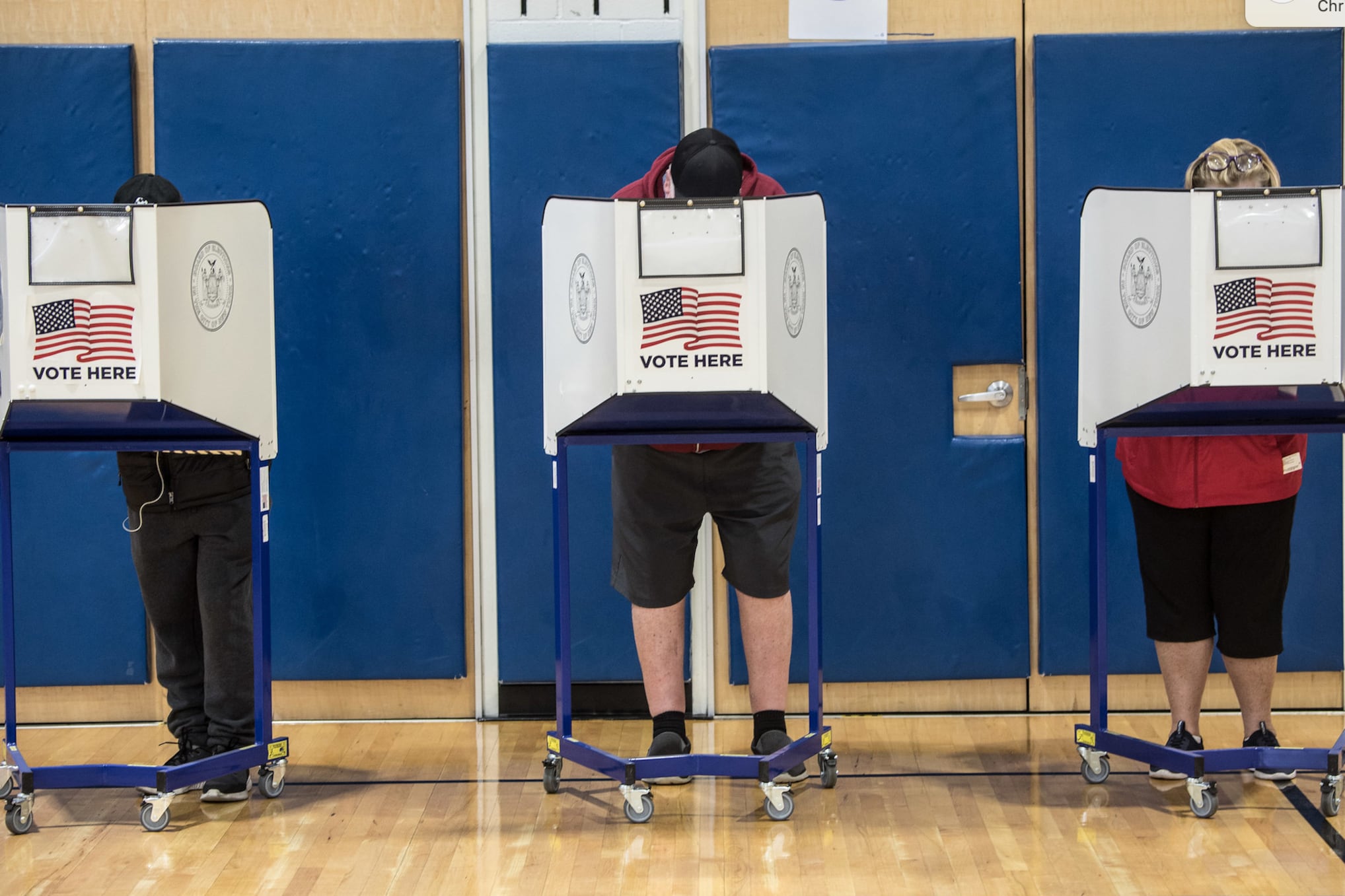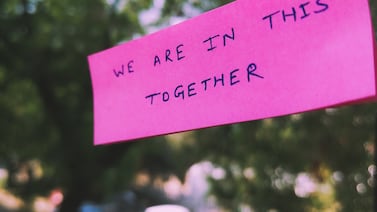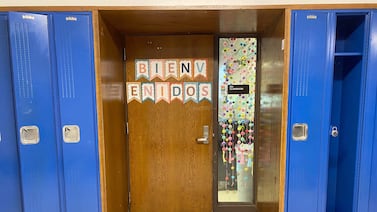New York City will head to the polls this November to elect a new mayor, and he or she won’t just take the reins at City Hall. Whoever wins the race will also control the nation’s largest school system.
With Mayor Bill de Blasio wrapping up his second and final term, his successor’s education agenda will likely be defined by a dire budget outlook, the academic and emotional fallout from COVID-19, and long-standing racial justice issues brought to the forefront by recent historic civil rights demonstrations.
There are many questions yet to be answered: Will the next mayor be friendly to charter schools, which have seen their enrollment steadily climb? How will they get along with the teachers and principals unions? What kind of schools chancellor might they appoint, and what will their vision be for wrangling the vast education bureaucracy?
Some of the next mayor’s education agenda could also depend on their relationship with Gov. Andrew Cuomo, who has major influence over the state’s education funding, and has asserted his authority over coronavirus-related school closures — sometimes big-footing de Blasio’s decisions.
The next mayor’s potential impact on the education system is already starting to take shape. A number of candidates vying for the Democratic nomination in a crowded field were asked to share their platforms at a series of education-centered forums last week. Here are some of the issues the candidates addressed — and the topics Chalkbeat will be paying attention to as the race heats up.
Party primaries are June 22, followed by the general election on Nov. 2.
Separate and unequal schools
New York City is home to one of the most segregated school systems in the country. Segregation tends to cluster resources and influence in just a few schools, while many others go without. Integrated schools, meanwhile, can yield improved academic outcomes and shape more civically minded students, among many other benefits.
Some of the most heated debates revolve around the city’s sought-after specialized high school seats and its gifted programs, both of which enroll few Black and Latino students. Many of the candidates have proposed expanding them.
“If we have such demand for these excellent high schools, why not create more of them?” asked Andrew Yang, an entrepreneur whose presidential campaign captured national attention. He was speaking about the specialized high schools at a recent mayoral forum hosted by PLACE, a controversial parent group that has lobbied hard to preserve many of the city’s current admissions practices.
“You’re really looking at ensuring that there’s more opportunity,” added Kathryn Garcia, a longtime public servant and the city’s former sanitation commissioner. “I would focus on the expansion of it, and reject the idea of scarcity.”
Garcia, Brooklyn Borough President Eric Adams, former Citigroup executive Ray McGuire and others have suggested the admissions criteria could change for the newly opened high schools, perhaps admitting the top students from across the city. Yang said he would use multiple measures for admission, in addition to the controversial Specialized High Schools Admissions Test, or SHSAT.
Expansion has been tried before, when Mayor Michael Bloomberg added five specialized high schools in the early 2000s. The schools have only become less representative of the system’s demographics since then. When it comes to gifted programs, simply adding more seats without changing how students are admitted is also unlikely to address segregation, since many see the current entrance test — given to 4-year-olds before starting kindergarten — as one of the main barriers to diversity.
Adding more selective schools could have the opposite of the intended effect, by further concentrating students who have more academic needs in fewer and fewer campuses.
Maya Wiley, a professor and attorney who once served as a de Blasio advisor and is now running for mayor, sat on a mayoral committee that in 2019 recommended ways to make the current admissions system more fair. Among the proposals were curbing the use of competitive admissions screens, and phasing out the current gifted program and replacing it with schoolwide enrichment models developed by local school communities.
Tackling the budget shortfall
With a state budget deficit projected at $15 billion, and the city estimating a $5 billion shortfall, the next mayor will inherit a city budget pummeled by the pandemic, amid lost tax revenues and unexpected costs.
Cuomo has proposed using federal coronavirus relief to plug some gaps for schools, but budget watchdogs have cautioned that is one-time help, and city and state officials will have to make even tougher calls going forward. It may take years for any potential state cuts to be restored, if at all. If the next chief executive has to cut the education department — the city’s largest expense, at $30 billion — they will have to weigh how to cut equitably among schools that serve different shares of high-needs students at a time that they may need extra support.
Comptroller Scott Stringer, Adams, Yang, and McGuire said at the recent candidate forums that they would cut unnecessary education department bureaucratic spending and reallocate that money to schools and classrooms, though none has provided more specifics. Shaun Donovan, who was the secretary of Housing and Urban Development under former President Barack Obama and Bloomberg’s housing commissioner, suggested he would “reprioritize” spending from other agencies in order to provide more resources for schools.
Cuomo has proposed a tax increase that would cover 10% of the budget hole, and he is pleading with the federal government to provide additional money to completely fill the state’s deficit. De Blasio does not have the power to raise income taxes, but he and other Democratic lawmakers and advocates have called on the state to increase taxes even more to avoid any cuts to schools.
Dianne Morales, a former nonprofit executive and mayoral candidate, and Wiley have said they support higher taxes on New York’s highest earners as one mechanism to raise money for schools.
Catching up students amid COVID-19
The coronavirus has torn open deep opportunity gaps for many of the city’s most vulnerable students. Many have gone without devices and the city still hasn’t installed Wi-Fi in all homeless shelters. More than 1 in 5 high school students have incomplete grades.
Many students with disabilities have gone without the services they’re entitled to. There are also concerns about whether English language learners — who are at a higher risk of dropping out compared to their native English-speaking peers — are making enough progress without daily in-person interactions with their teachers and classmates. If eviction moratoriums expire, that could swell the ranks of homeless students, who already make up 10% of the school system.
Following months of lost learning time, schools will likely need to assess where children stand, equip teachers with new training, and provide extra mental and emotional support as students and staff come to grips with the tragedy that has unfolded in the city.
A few candidates detailed plans at last week’s events to help students catch up. McGuire, for example, said he would create a summer tutoring program staffed by teachers and recent college graduates. Donovan wants to create grants with public and private dollars that schools could use to pay for extra services, such as tutoring. He would also form an “education recovery corps,” and hire CUNY students and graduates to help teachers provide extra academic or socio-emotional support for students.
Persistently struggling schools
With so much focus on COVID-19’s toll, attention has waned from a problem that has long vexed New York City mayors: how to improve the city’s lowest performing schools. These campuses often suffer from structural inequities ranging from academic and racial segregation to teacher recruitment and retention.
There are few silver bullets and the last two mayoral administrations offered widely divergent models.
Bloomberg gave principals leeway to make changes at their schools, but insisted on strict accountability measures, such as A-F ratings. He closed many schools, creating new, smaller ones in their place. Some of those efforts bore fruit, but also prompted battles with the teachers union and many school communities.
De Blasio turned away from that approach, arguing that schools needed additional support, rather than harsh consequences, and he largely advanced union-friendly initiatives. His $773 million turnaround program flooded nearly 100 struggling schools with social services, academic coaching, and longer school days. After posting disappointing results, the mayor ended the program but kept many of the strategies in place.
Defund the (school) police?
As pressure has grown to rethink policing in the wake of massive protests against racist police violence, the next mayor will face big decisions about whether to reduce the role of over 5,000 school-based officers who patrol the city’s schools.
De Blasio has favored reforms such as discouraging student arrests for low-level offenses and significantly curtailing the use of suspensions, which are issued disproportionately to Black students. More recently, he agreed to begin a multi-year process of transferring oversight of the school safety division from the NYPD to the education department, a task that may largely fall to the next mayor. But the school safety division’s budget has ballooned under de Blasio and some advocates have criticized him for resisting funding cuts and other sweeping reforms.
Any overhaul to the school safety division, which is by itself one of the nation’s largest police forces, would be a complicated task and the mayoral candidates are already facing questions about the issue. At a recent forum moderated by the group Advocates for Children, Wiley, Morales, and Donovan said they were committed to removing police from schools and diverting the funding to bolster less punitive interventions and mental health services. Stringer called for more “restorative” approaches to student discipline at a recent forum, which typically include ideas like peer mediation, but did not directly commit to removing police from schools.
Garcia, Yang, and McGuire indicated at last week’s events they would take a school-by-school approach in consultation with principals. Adams, a former police officer, said there shouldn’t be a “police culture” in schools, but there must be “properly trained individuals” to deal with dangerous situations.
Setting the tone with charter schools
Like many issues in New York City, the biggest decision about charter schools boils down to real estate. The next mayor will decide how accommodating to be when charter schools request space in public school buildings (or face a requirement to pay for private space elsewhere).
De Blasio has been more reluctant to fork over existing public school space, as co-locations can cause friction between schools within buildings. It may be less relevant in the immediate future, though, as the city has reached the limit on the number of charter schools that can open, a cap that is controlled by the state legislature. (To encourage more co-locations and save money, Cuomo has proposed ending a state subsidy that helps finance private space for charters.)
Still, the mayor will set the tone and determine how friendly to be to a sector that educates about 13% of the city’s public school students.








